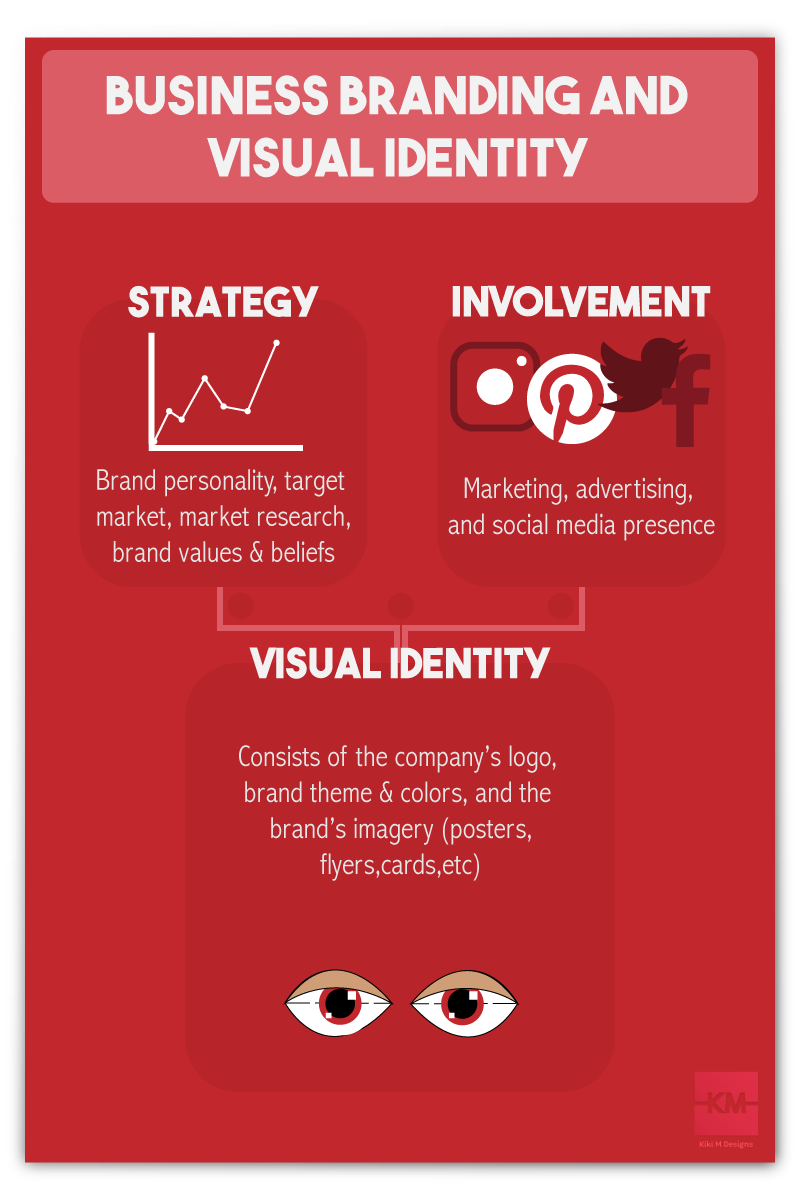Setting Up Processes As A Freelancer To Make Your Business Run Smoother
When you first become a freelancer you don’t think about all of the responsibilities that you now have to take on. You have to be the marketer, the accountant, and just about anything that is involved in day-to-day business maintenance. It can get very overwhelming and time-consuming. That’s when you need to set up processes for your business so you can spend less time at a screen and more time with your family or out travelling the world.
Now, some of you may wonder what I am talking about when I say “processes.” I simply mean automating the tedious, and time consuming tasks that come with being your own boss. This could include e-mailing, posting to social media, blogging, to even how you process your clients. Having things already set up and ready to go makes things a lot easier and less time consuming. Some examples of things you can do include…
1. Create e-mail templates Some people over-look this and often don’t think about it. Creating e-mail templates can save you a lot of time. It’ll take a little time to make them but in the long run it’ll make things run a little smoother. So, instead of typing out all of your client’s e-mails individually, you can just copy & paste into a template that is simple and to the point. That way you don’t have to worry about missing anything and ensure you’re sending a consistent message to all clients.
2. Invest in a social media scheduling program Social media can be one of the largest pains a business owner can run into. In this day and age, if you aren’t on social media, people most likely have no idea who you are. It’s a really good idea to get involved in social media and to stay up on your posting. It can be hard when you’re working so hard during the day on other things for your business you can forget about posting your next tweet or post on Facebook. It may be a good idea to look into a social media management platform that can help you schedule your posts and stay on top of your brand. Some examples of this would be Hootsuite and Buffer.
3. Creating a solid marketing plan, and following through with it. Most freelancers don’t think about this step. Making a marketing plan is crucial to a business’ success. It helps guide you and your business along it’s journey, so you aren’t stuck saying, “well, what’s next?” Scrambling to figure out your marketing is so time consuming. You wouldn’t have time for anything else. Marketing plans depend on the company and their target market. I’d recommend reading about marketing plans and see what the other people in your industry are doing. Once you have your marketing plan it’s all about following through with what you have planned. This can be the hardest thing because you almost have to create a schedule or a system. I found what helps the most is downloading a to-do list that you can set reminders on your phone as well as what time each task needs to be done by. The one I use on my Android is called SplenDO. It’s free, so check it out! This can be extremely helpful when scheduling your social media posts, if you decide to skip the social media management platforms. It can also keep you on top of your promotions and making sure to promote yourself on a regular basis.
4. Creating a process that can work with all of your clients. Some freelancers like to dive into projects without looking at the details, which, in the long run, could cause bumps in the road along the way. You’re struggling with getting your projects off the ground, you’re struggling getting your payments on time, or your projects just end up being a complete mess. It’s a good idea to outline the process that you need to put all of your clients through to make the project run smoothly. Some of these items including talking with them, getting information from them, getting payment from them, signing a contract, etc. By outlining it, you can then create PDF documents or templates of the questionnaires your clients need to answer, or the contract you’re going to have them sign. So then every time you get a new client, all you have to do is gather the documents, and send them their way for completion. It makes things a lot more smooth and lets the clients know from the jump what to expect while working with you. This can also help weed out the clients who are not quite ready to commit. If someone complains that your process is too complicated, then they aren’t serious about the project. Anyone who is serious about having you work on their project will do what it takes to make sure things are smooth for you as well as themselves, even if it takes a little work on their end.
These are only some examples of things that you can do to make your company run smoothly. Now, some freelancers have other tasks that they have to do that some don’t. It’s all about finding a solution that will help automate the whole process so you don’t have to worry about it. Even if that means investing a little money. I’ve always heard spending money to save time is always worth it, and I’d have to agree. Stop spending all of your days at a screen, it’s time to go see the world, and its time to automate your business.
Business Branding and Visual Identity
Whether you’re a designer, business owner, or brand the most important part of building your reputation is branding your company. It may seem like a long, tedious task but it’ll make running your business a lot smoother. Think about it as another aspect of your business that contributes to its success and organization. It’ll help you or your client’s business get the word out there by making sure it’s well represented and targeting the right audience. A business’ brand consists of their Brand Involvement, Strategy, and Visual Identity. Now, let’s break this down.
The Brand Involvement just refers to where the brand is planning on getting involved. This is via social media, advertising, etc. With this the business must look at their target market and plan accordingly. This involves a lot of marketing skills and patience. A business’ strategy consists of the personality, target market, and the brand’s values and beliefs. When a business creates a business plan this is what a lot of the research that is done will help you with. A company’s target market as well as personality and values will contribute greatly to their visual identity. As a graphic designer it’s part of our job to look at their strategy and come up with an appropriate visual representation of their company.

Visual Identity
When we talk about a business’ visual identity its referring to their logo, brand colors & fonts, and the brand’s imagery. Some people don’t believe that a company’s visual identity is important. It really is and I could not stress that enough. They say, “don’t judge a book by its cover” but that is exactly what people do when they’re looking at your business. When someone goes out and buys their pets food, they aren’t going to go to a company that’s visual identity is straight up ugly or dated. Maybe in some situations this will help out the business more than hinder it but in most cases people want to go somewhere that looks professional, neat, clean, and up to date. Yes, trends play a HUGE role in keeping your business afloat, but that’s a whole different conversation. The reason visual identity is so important is because it’s how customers identify or remember a business; everything down to the colors and fonts used. usually and icon or lettering that represents your company as a whole.
This is where the company’s strategy helps with the visual identity. You often want to look at your target market, mood, and personality. You also want to look at what the company does, of course. When looking at all of these things you want to make sure that whatever logo your business decides to go with, or if your designing a company a logo, that its appropriate within the parameters given. For example, you don’t want to create a logo for a pet store that’s a multi-color butterfly. Simply because it doesn’t scream, “pet store”. Something along the lines of a collar or a feeding bowl would be more appropriate. You also want to make sure that your logo is simple, clean, and to the point. Simple logos are never a bad thing. In fact, I believe a simple logo is the best way for a business to create their logo.
Now, for some businesses, a complex logo suits their brand. That call is completely up to the business owners but, let me explain why simple is better. Firstly, it’ll be easier for people to remember what business the logo belongs to. If its simple then its easy to remember. Secondly, if you over complicate your logo, it could end up looking like a complete mess or, nothing like your original idea. And lastly, it almost always guarantees that the logo will be universal when it comes to web, print, and manufacturing copies of the logo; meaning it’ll look good no matter what. You want to stand out from your competitors. Your logo should also be distinctive and in correspondence with your brand’s colors and themes.
Speaking of brand colors and themes… This is another big aspect to a business’ visual identity. This refers to the company’s color scheme, fonts, layouts, etc. Again, these should be appropriate. These often reflect the business’ “mood”. When it comes to color it’s recommended to do some color research as well as create a mood board. A mood board is simply a document that is comprised of images from the internet that go along with the mood you’re trying to set with your brand. The most effective way to gather these images is creating a private Pinterest board and pinning things that match the mood the business is going for. If you’re a designer working with a client you can still create private boards, invite them to it, and ask them to pin things that match the mood they’re aiming for. This is often where you will get your colors as well as font ideas. With color being one of the more important things when branding, it’s a really good idea to do some research. Every color sparks different emotions and can often give people incentive to buy from you or even to avoid your business. There have been many studies that look into how color affects mood and actions. It’s actually pretty neat. Information on this can be found on the Internet. There is just so much to say about color; it’s almost better to just go out there and research it on your free time.
As a graphic design artist it’s crucial to know what colors do what especially when a client is asking you to assist them in their decision making. Lastly, a company’s visual identity includes any and all of the brand’s imagery. This refers to any product packaging, stationary, business cards, posters, flyers, marketing materials, and just any visual representation of the company or business. When creating brand imagery it often corresponds with the brand’s themes and logo. This is the most straightforward area of branding. Once you find a layout that works it should be universal for all of the brand’s imagery. You often see the same design on a business card as the letterheads, pencils, envelopes, etc. Like mentioned before you want your business’ brand to be neat, clean, and to the point. In this case repetition is the recommendation. You want everything to work together so when people see it, they think of your business.
There is so much information that can be told about branding. As an artist or as a business owner, it’s really about the experience. The Internet will be your best friend. Always remember to keep it clean, simple, and to the point.



